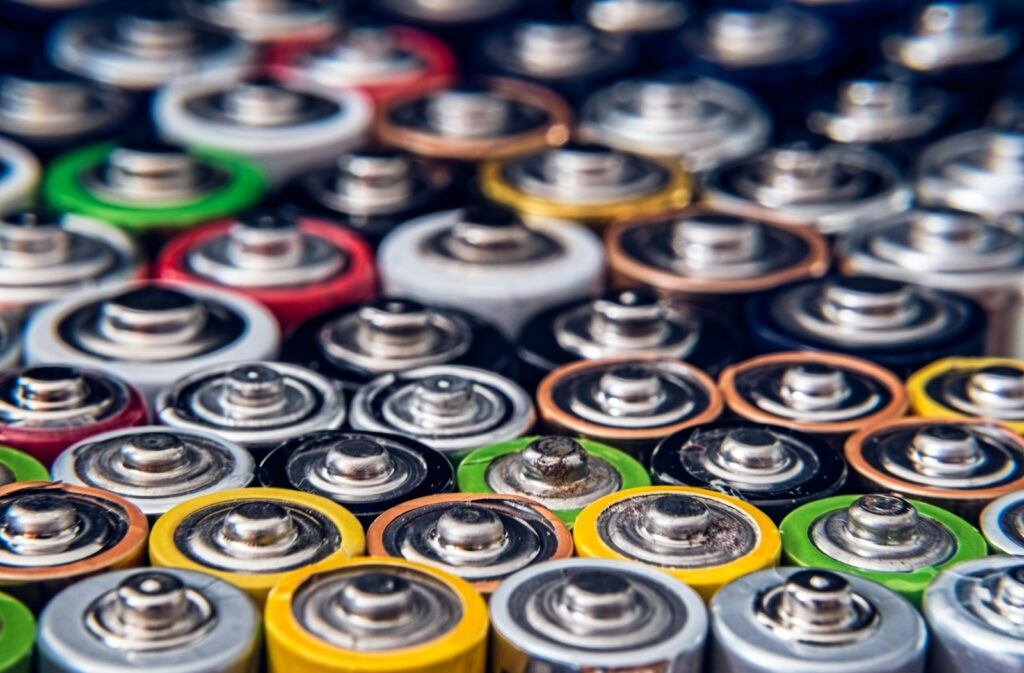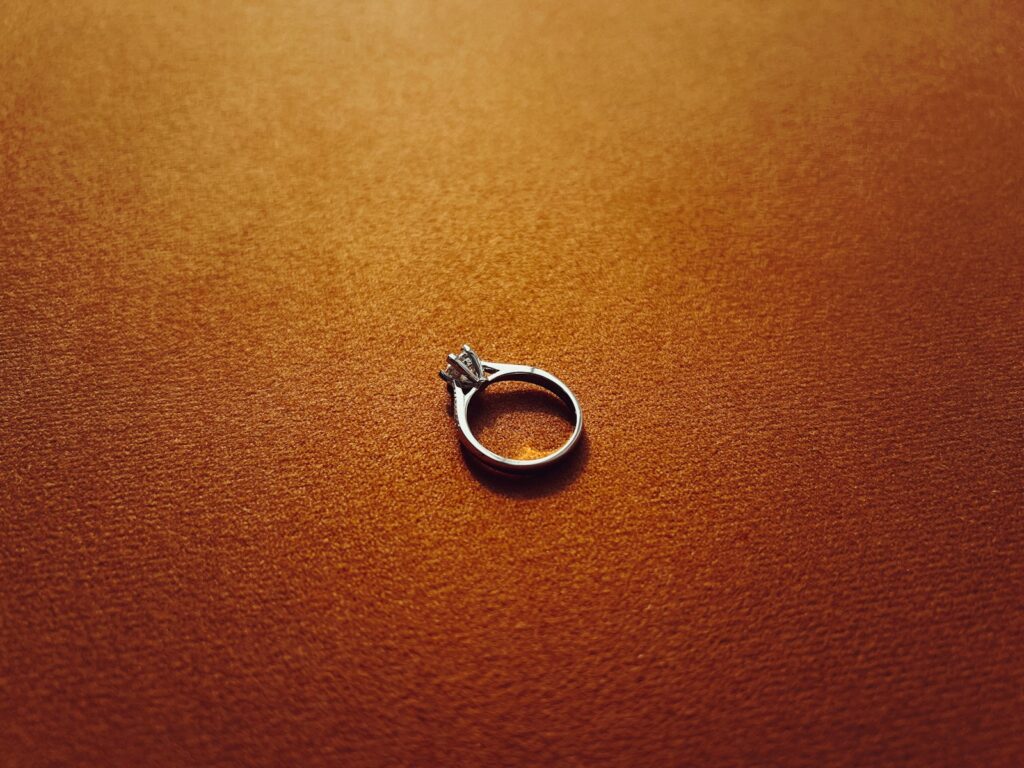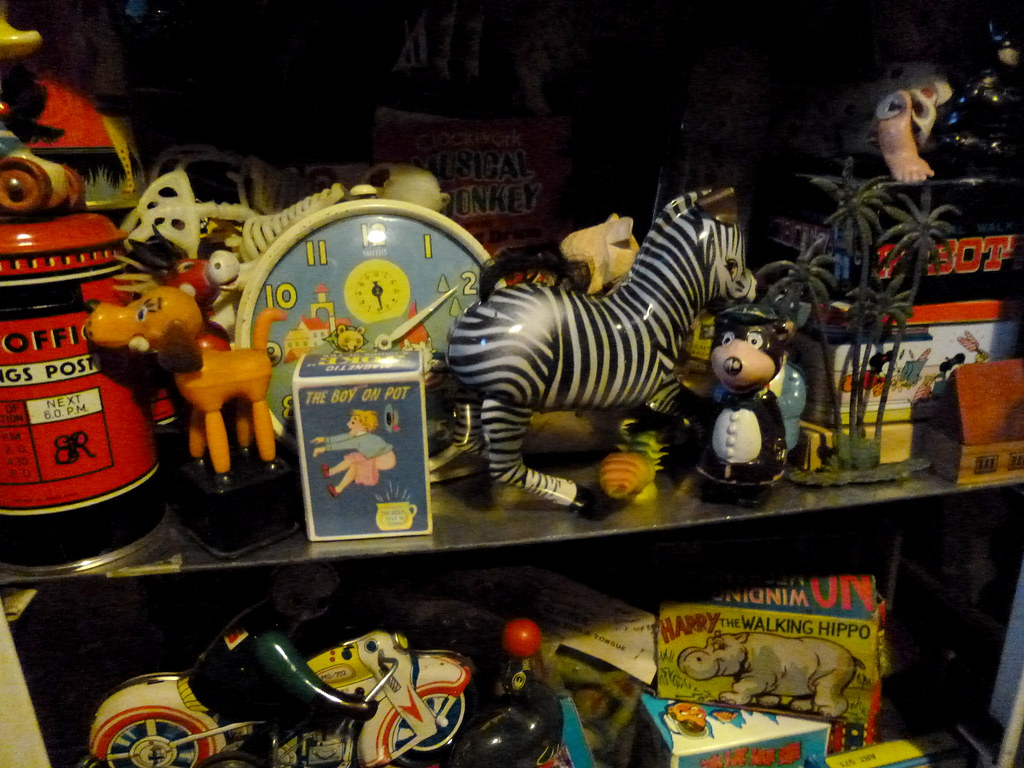
Common concerns often revolve around obvious risks, such as a bicycle without a helmet or a slingshot in the hands of an overly adventurous child. However, both historical records and recent product recalls reveal a more alarming pattern: some toys go far beyond simple hazard. These are not merely flawed designs but examples of profound oversight—products that, by all appearances, should never have reached store shelves.
Ensuring the safety of children is a basic responsibility. Alarmingly, many toys marketed for playtime have proven anything but safe.
This article invites readers on a compelling and sometimes disturbing journey through the evolution of toy safety. From infamous historical blunders to recent design controversies, we examine some of the most dangerous toys ever produced. Through uncovering the hidden risks and surprising decisions behind these products, one question arises time and again: What were the designers thinking?

1. **CSI Fingerprint Analysis Kit**: Marketed in 2007 as an educational tool for young investigators, the CSI Fingerprint Analysis Kit quickly gained popularity among children fascinated by crime-solving. Designed to simulate forensic procedures, the kit included materials for collecting and analyzing fingerprints at home. The method appeared harmless: sprinkle powder, blow gently, and reveal the prints—whether to catch a culprit or clear oneself of suspicion.
However, the reality behind this seemingly innovative toy revealed a severe safety failure. Unbeknownst to consumers, the fingerprint powder supplied with the kit was contaminated with 7 percent tremolite, a highly carcinogenic form of asbestos. This hazardous material, sourced from a Chinese manufacturer, posed a serious health risk, particularly when inhaled by children using the product during play.
The company responsible, Planet Toys, did not take immediate corrective action. Although the presence of asbestos in a children’s toy would typically warrant urgent recall, the kit remained on store shelves until 2009. Even after its official removal, reports indicated that contaminated units continued to circulate through online marketplaces, raising serious concerns about the effectiveness of product recalls and ongoing consumer safety.
This case serves as a stark reminder that not all dangers are visible. Parents and guardians were urged to exercise caution, as the long-term consequences of such exposure could not be easily undone.

2. **Hasbro Javelin Darts (aka Lawn Darts)**: Hasbro’s Javelin Darts, commonly known as lawn darts, stand apart among dangerous projectile toys. Unlike typical indoor darts, these large, weighted darts with pointed metal tips were designed for outdoor play requiring skill. However, when used by children, their potential for causing serious injury became alarmingly evident.
Thrown at considerable speed and often by inexperienced young players, these darts had the capability to penetrate a human skull. Tragically, this danger was realized: in 1970, a four-year-old child died as a direct result of an injury from a Javelin Dart, one of at least two recorded fatalities. Between 1970 and 1988, lawn darts caused approximately 6,100 emergency room injuries, underscoring the risks inherent in their design.
Growing concerns over injuries and fatalities led to the removal of the original Javelin Darts from store shelves in 1988. Although modern versions of lawn darts exist, they feature blunt rubber tips designed to prevent penetration injuries. Despite these changes, safety experts advise families with young children to avoid lawn darts entirely, as the fundamental risks associated with the concept remain.

3. **Flubber**: In the late 1960s, Hasbro released Flubber, a gooey, seemingly harmless substance designed to resemble the popular Silly Putty. Unlike its innocuous counterpart, however, Flubber concealed a hazardous secret that soon caused widespread health issues among children.
Thousands of children exposed to Flubber developed severe skin rashes and sore throats. Although the precise cause of these reactions was never fully disclosed, the extent of the adverse effects made it evident that the toy was unsafe. Hasbro faced a significant crisis as they attempted to dispose of a large quantity of the toxic material.
Various disposal methods were employed, including burning, dumping, and sinking approximately 50,000 translucent Flubber balls. Despite these efforts, the material proved resistant to destruction. Eventually, the remaining stock was clandestinely buried in a field behind the Hasbro factory and covered with asphalt to form a parking lot.
Decades later, unusual reports emerged describing “zombie Silly Putty” seeping through cracks in the asphalt on hot days, suggesting that Flubber’s chemical hazards persisted long after its official removal, presenting an enduring and peculiar environmental concern.

4. **Wego Kite Tubes**: In the mid-2000s, a peculiar aquatic trend known as kite tubing briefly attracted thrill-seekers. Central to this fad was the Wego Kite Tube, a massive yellow inflatable roughly ten feet in diameter, resembling an oversized beach tube or even a blow-up UFO. Its sole purpose was to launch riders high into the air by being towed behind a speedboat.
While the concept was thrilling, it posed significant risks. The Consumer Product Safety Commission (CPSC) quickly identified the dangers involved in propelling children or adults into the air at high speeds, tethered to a moving boat. The absence of control, the unpredictability of wind conditions, and the solid water surface below created an environment rife with hazards.
Tragically, before regulatory measures could fully address the issue, three fatalities occurred in accidents directly linked to the Wego Kite Tube. This alarming loss of life prompted the removal of approximately 19,000 units from the market in 2006. Since then, these devices have disappeared from stores, underscoring both the grave danger they represented and the importance of timely consumer protection.

5. **Clackers**: The origins of toy designs are often obscure, yet clackers appear inspired by a rather fierce concept. Comprising two hard, heavy spheres connected by a string, clackers closely resemble bolas—the skull-crushing projectiles famously wielded by Conan the Barbarian.
Observing clackers in use reveals their alarming potential for harm. When swung at high speeds, often supersonic in the eyes of children, the hard plastic spheres collide violently. This rapid impact carried a significant risk of serious injuries, including head trauma and lacerations.
The inherent dangers of clackers did not escape regulatory scrutiny. During the 1970s, when the toy reached peak popularity, the Consumer Product Safety Commission (CPSC) intervened, implementing safety modifications to reduce injury risks. Although safer versions of clackers, made from softer materials or designed to prevent forceful collisions, remain available today, safety experts generally recommend simpler alternatives, such as a basic jump rope, for active children’s play.

6. **Water Beads**: Water beads—small, shiny, spherical beads—are widely available through major retailers such as Walmart and Target, as well as online platforms like Amazon. Produced under various brand names including Orbeez, Sooper Beads, and Big Mo’s Magic Water Beads (also known as Big Mo’s Jelly Pearls), these products are frequently marketed as “vase fillers” or, more concerningly, as “sensory exploration toys” for children as young as 36 months. The promotion of such items as developmental tools for toddlers, despite their classification as home décor, raises significant safety concerns.
The primary danger of water beads lies in their ability to absorb water and expand dramatically—sometimes up to 200 times their original size. This property transforms an otherwise intriguing plaything into a potentially life-threatening hazard when ingested or inserted into body cavities such as ears or noses by young children.
Numerous documented cases highlight the severity of injuries caused by these beads. For instance, one child swallowed a bead that expanded inside the intestine to the size of a racketball, causing a significant blockage. In another case, a young girl ingested 100 beads, necessitating an emergency room stay as she passed all of them overnight, enlarged to the size of marbles. Although generally non-toxic, water beads present substantial risks despite their marketing as educational toys.
Given these hazards, parents and caregivers must exercise extreme caution. The fascination of young children with a container of water beads should prompt immediate removal, particularly for those under six years old.
This examination of hazardous toys reveals that dangers are not confined to the past. The toy industry continues to produce items with unintended risks, posing challenges for consumers who must remain vigilant. The ongoing tension between innovation and safety underscores the importance of awareness and caution in protecting children.

7. **Gilbert Atomic Energy Lab**: The Gilbert Atomic Energy Lab, a 1950s children’s science kit, is notorious for its audacious inclusion of real radioactive materials. Equipped with a junior Geiger counter, three illustrated books including titles such as “Prospecting for Uranium” and “How Dagwood Splits the Atom,” and samples of radioactive ores containing uranium-238, this toy exemplifies a remarkable lapse in safety judgment from a time when radiation hazards were poorly understood.
For those children fortunate or unfortunate enough to receive this kit during the 1950s, a sobering caution remains: do not pass this toy down to future generations. Uranium-238 has a half-life of approximately 4.5 billion years, roughly the age of the solar system, meaning the radioactive ores contained within remain hazardous to this day.
The Gilbert Atomic Energy Lab was discontinued decades ago as awareness of radiation dangers increased. Nonetheless, it remains a legendary example of the era’s cavalier attitude toward safety. The company, A.C. Gilbert, was also responsible for other hazardous kits, such as the Gilbert Glass Blowing Kit, which required working with glass at temperatures between 600 and 700 degrees Celsius, and the Gilbert Kaster Kit Jr., which allowed children to cast toy soldiers from molten lead—exposing them to risks of lead poisoning and potential permanent brain damage. The 1950s indeed represented a perilous period in the history of toy safety.

8. **Easy-Bake Oven (2007 Reboot)**: Hasbro reappears in our discussion of questionable toy designs with the 2007 redesign of the classic Easy-Bake Oven. In that year, federal regulations forced Hasbro to replace the beloved 100-watt incandescent bulbs, prompting a substantial internal redesign to preserve the oven’s baking function. However, this seemingly minor adjustment resulted in serious safety issues.
The redesigned oven posed significant hazards for its young users. Reports indicated that 250 children experienced finger entrapments inside the oven, while 77 suffered burns, including 16 cases classified as serious. One particularly tragic incident involved a child who required partial finger amputation following an injury caused by the toy. In response to these safety concerns, Hasbro recalled nearly one million Easy-Bake Ovens, acknowledging the design flaws that transformed a once cherished toy into a safety risk.
It is important to emphasize that the Easy-Bake Oven models currently on the market have addressed these safety issues and are considered safe. Nevertheless, the 2007 model serves as a cautionary example, reminding consumers to carefully review product warnings before gifting and to avoid nostalgic purchases of problematic vintage toys.

9. **Black Panther Wakanda Battle Claws**: In 2022, Hasbro released the Black Panther Wakanda Battle Claws, a product that, while free from hazardous materials or chemical dangers, quickly drew concern from safety advocates such as the nonprofit World Against Toys Causing Harm (W.A.T.C.H.). The issue is not hidden toxins or burns, but rather the physical risks posed by the toy’s design.
These large, rigid plastic claws, roughly the size of a child’s own head, encourage vigorous physical play that can result in blunt force injuries. Young children wielding these claws may inadvertently cause serious harm, particularly to eyes and faces. Despite the undeniable appeal of the Black Panther character, the Battle Claws represent a poorly considered design with potential for real injury.
Released in summer 2022, these claws remain widely available as of late 2024. Although they have not been subject to a major recall, safety organizations anticipate their continued presence will lead to further emergency room visits before any formal action occurs. This example serves as a reminder that some toys can be dangerous simply because of their design, without any need for hidden hazards.

10. **Magnetic Stones Toy Creativity Development DIY Magnetic Beads, 5mm (.2 inch)**: Marketed as educational or creativity-enhancing tools, products such as “Magnetic Stones Toy Creativity Development DIY Magnetic Beads” pose a serious and increasingly common safety hazard. These 5mm (0.2 inch) high-powered magnets, though visually harmless, violate established safety standards due to their small size and intense magnetic force. When ingested, they present a grave risk of life-threatening internal injuries.
The danger lies in their ability to attract one another or other metal objects through bodily tissue. If a child swallows more than one magnet—or a magnet and a metallic object—the internal magnets may connect through loops of the digestive tract. This can lead to intestinal perforations, blockages, internal bleeding, sepsis, infection, or even death. These are not minor health concerns but medical emergencies requiring immediate and often invasive treatment.
Despite repeated recalls and public warnings, these hazardous toys remain widely available, continuing to alarm consumer safety organizations. Not only toddlers but also older children are at risk, particularly those who use the magnets as makeshift piercings or accessories.
Parents and guardians are strongly advised to purchase such products only from verified, reputable sources. Additionally, they should educate children about the dangers of placing magnets in or near the mouth and take extra care to keep these items out of reach of younger siblings.

11. **Yoto Mini Speakers**: In today’s era of digital entertainment, electronic components have become central to many children’s toys. While most are rigorously tested and considered safe, certain products carry hidden dangers embedded deep within their design. The Yoto Mini Speaker, a widely used device for delivering audio content to children, exemplifies such concerns. Its risk does not lie in its function or content, but in its lithium-ion battery—a standard power source in numerous modern devices—that has been reported to overheat and, in some cases, ignite.
This overheating presents a serious hazard. A child’s seemingly harmless speaker can become a source of burns or even house fires. This incident reflects a broader safety challenge in the toy industry: the growing dependence on advanced electronics and rechargeable batteries. While these components enhance the user experience, they also demand careful oversight. A malfunctioning battery can quickly shift from being slightly warm to causing severe damage, putting both children and households in jeopardy.
The recall of the Yoto Mini Speaker underscores the necessity of close scrutiny, even for products from established brands. It is a common misconception that new or well-known devices are free from safety flaws. In reality, the complexity of battery systems and circuitry requires consistent monitoring. Parents and caregivers should always review available safety information, including recall notices, when choosing any toy powered by rechargeable batteries. The conveniences of modern technology must be matched by an unwavering commitment to child safety.

12. **Newmemo Children’s Ring Sets**: Children’s jewelry, particularly the Newmemo Children’s Ring Sets, may appear entirely innocuous at first glance—colorful, affordable, and designed to spark joy through imaginative play. However, beneath their attractive appearance lies a significant and often overlooked danger, one rooted in toxic chemical exposure.
These rings have been found to exceed federal safety limits for lead and to contain prohibited levels of cadmium. Both lead and cadmium are heavy metals known for their severe toxicity, even in minimal amounts. When children touch or place these rings in their mouths—a common behavior at young ages—they risk absorbing these substances. The consequences can be severe and long-lasting, including neurological impairment, developmental delays, and damage to internal organs. The very features that make the rings visually appealing also render them acutely hazardous.
The presence of chemically contaminated products such as these, especially from unregulated online marketplaces, highlights an enduring challenge in consumer safety. While regulations are in place, enforcement gaps remain, particularly for items manufactured in regions with limited oversight. This underscores the need for parents and guardians to remain vigilant. Products with a low price tag should never take precedence over safety. When it comes to items like children’s jewelry, it is essential to choose products from reputable manufacturers that comply with rigorous safety standards, safeguarding young consumers from these silent and harmful threats.

The history and current landscape of toy safety reveal an uncomfortable yet essential reality: the realm of childhood play is not always as harmless as it appears. From the historical missteps of asbestos-laced fingerprint kits and lawn darts that caused traumatic injuries, to the contemporary risks posed by expanding water beads, high-powered magnets, and chemically contaminated jewelry, the intersection of innovation and inadequate oversight continues to generate serious safety concerns.
There remains a widespread assumption that toys sold at major retailers or through popular online platforms are inherently safe. While regulations have significantly improved since the unregulated decades of the 1970s and 1980s, and new toys undergo safety assessments before reaching the market, a critical uncertainty persists. No matter how thoroughly a toy is tested in controlled environments, its true risk often emerges only when it is handled by imaginative, curious, and sometimes unpredictable children. The reality is that children frequently repurpose toys in ways that exceed the expectations of designers—turning water beads into household items or using clacker balls as makeshift weapons.
Given this complexity, the most effective approach is a proactive and informed one. Parents and guardians should adopt a vigilant mindset when selecting and evaluating toys. This does not imply treating every item as a potential hazard, but rather acknowledging that even everyday objects—from hoodie strings to common stationery—can pose safety risks in certain circumstances. For toys with multiple intended or unintended uses, such as water beads marketed for both educational play and decorative purposes, extra caution is warranted.
To support safe play, it is essential to consult reliable resources such as the annual list of hazardous toys published by W.A.T.C.H. and the Consumer Product Safety Commission’s recall database. Parents are encouraged to inspect toys thoroughly upon purchase, monitor their use, and educate children about safe handling practices. The responsibility for ensuring a safe environment rests not only with manufacturers and regulators, but also with families. Prioritizing safety in play is one of the most meaningful ways to protect and empower children.



